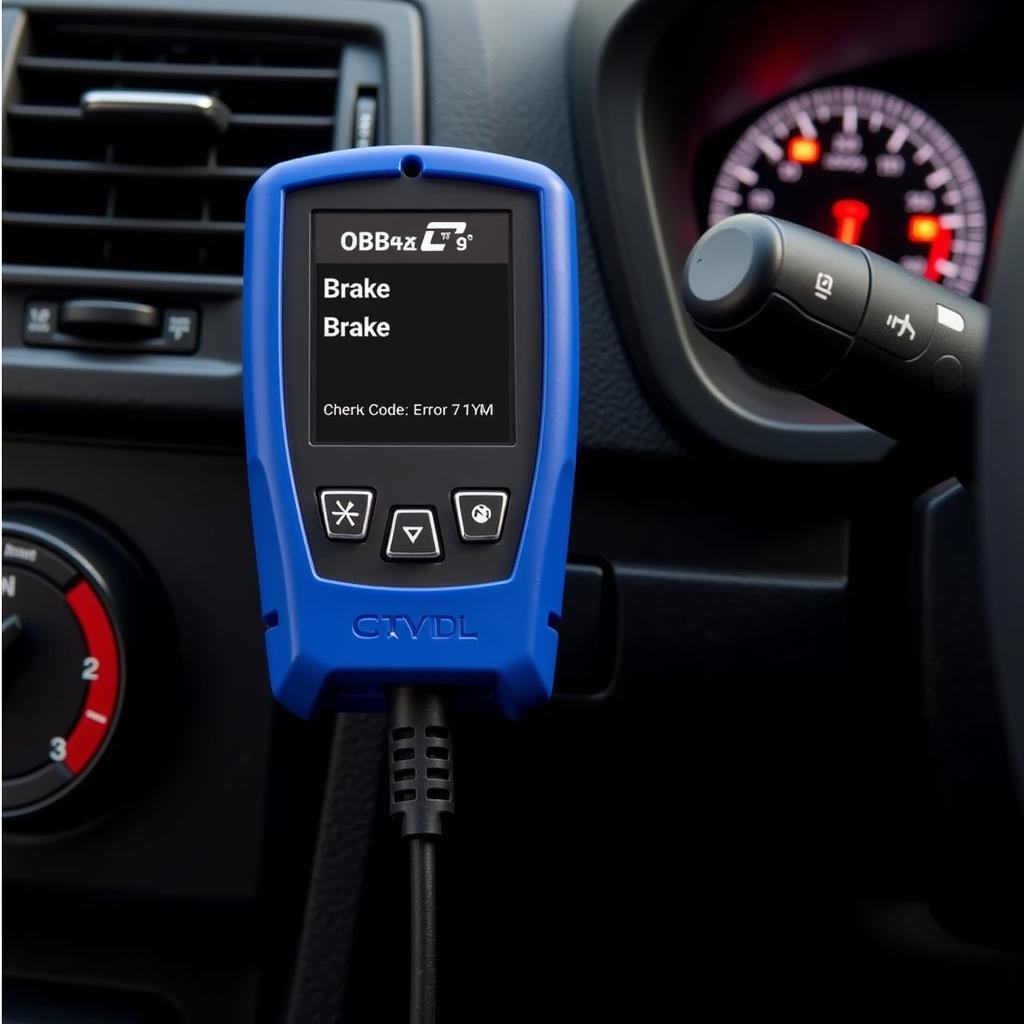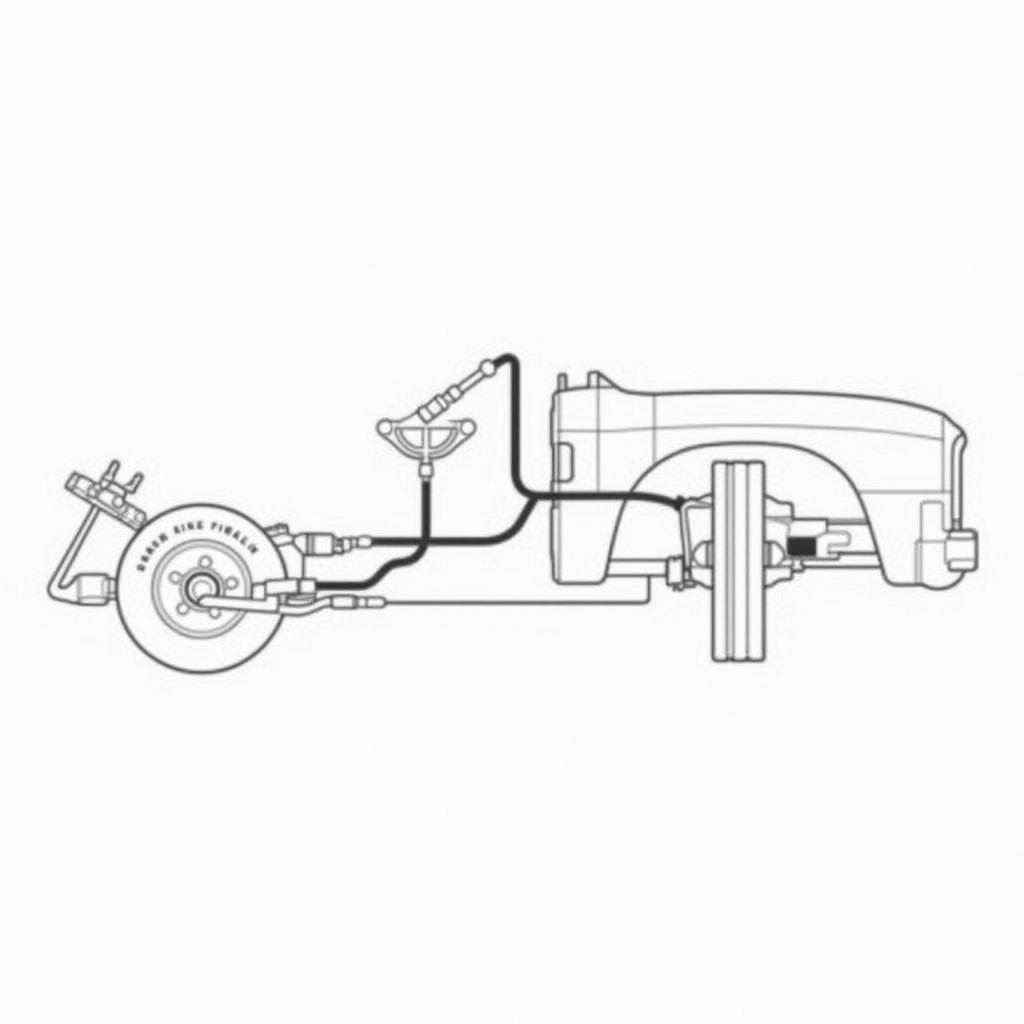That dreaded brake pedal warning light illuminating your dashboard can be a heart-stopping moment. It’s a signal that something isn’t right with your braking system, a critical component for safe driving. This article will guide you through the common causes of a brake pedal warning light, how to diagnose the problem, and some potential solutions, including remote software fixes.
Common Reasons Your Brake Pedal Warning Light is On
Several issues can trigger the brake pedal warning light. Some are relatively simple to fix, while others require professional attention. Understanding the possibilities can help you determine the severity of the issue and the best course of action.
Low Brake Fluid
One of the most frequent culprits is low brake fluid. Your braking system relies on hydraulic pressure, and if the fluid level drops too low, the warning light will activate. This could indicate a leak somewhere in the system, worn brake pads, or simply that your vehicle is due for a brake fluid flush.
Parking Brake Engaged
A surprisingly common reason for the warning light is an engaged parking brake. While often overlooked, double-check that you’ve fully disengaged the parking brake before panicking. A simple flick of the lever can save you time and worry.
ABS Issues
The Anti-lock Braking System (ABS) is a crucial safety feature. If there’s a problem with the ABS, such as a faulty sensor or module, the warning light might illuminate. This requires a more specialized diagnosis, often involving a diagnostic scanner.
Brake Pad Wear
As your brake pads wear down, they eventually reach a point where a sensor triggers the warning light. This indicates it’s time to replace your brake pads, a routine maintenance item. Ignoring this warning can lead to more serious brake damage.
Faulty Brake Light Switch
The brake light switch activates your brake lights when you press the pedal. A malfunctioning switch can sometimes trigger the brake pedal warning light. This is a relatively inexpensive part to replace, but requires some basic mechanical knowledge.
Diagnosing the Problem: From Simple Checks to Remote Diagnostics
Before rushing to a mechanic, there are a few simple checks you can perform yourself. First, check your parking brake. Next, inspect the brake fluid level. If it’s low, carefully top it off and monitor for further drops, which would indicate a leak.
 Using OBD2 Scanner for Brake Diagnosis
Using OBD2 Scanner for Brake Diagnosis
For more complex issues, such as ABS problems or suspected electronic malfunctions, remote diagnostics and software solutions are becoming increasingly popular. Using specialized software and a diagnostic device plugged into your vehicle’s OBD-II port, a remote technician can analyze the error codes and potentially resolve the issue by reprogramming or updating the car’s software.
“Remote diagnostics is a game-changer,” says John Smith, Lead Automotive Diagnostic Engineer at AutoTech Solutions. “It allows us to quickly identify and fix software-related brake issues without the customer needing to bring their car to the shop. This saves time and money, especially for minor software glitches.”
Remote Software Solutions: The Future of Car Repair
Remote software solutions are transforming the automotive repair industry. From updating control modules to resolving sensor issues, many problems can be fixed remotely. This is particularly beneficial for software-related problems that trigger the brake pedal warning light, such as ABS malfunctions or communication errors.
How Remote Software Solutions Work
The process is relatively simple. You connect a diagnostic device to your car’s OBD-II port. The device communicates with a remote technician who can access your car’s computer system. They can then diagnose the problem and, in many cases, upload new software or reprogram existing modules to fix the issue.
“Think of it as a software update for your car,” explains Maria Garcia, Senior Software Engineer at CarConnect. “Just like your phone or computer, your car’s software occasionally needs updates or patches to address bugs and improve performance. We can do this remotely, saving you a trip to the dealership.”
Conclusion
The brake pedal warning light shouldn’t be ignored. While a simple issue like an engaged parking brake can be easily resolved, other problems require professional attention. With the advancement of remote diagnostics and software solutions, many brake-related problems can now be fixed quickly and efficiently without even leaving your driveway. If your brake pedal warning light is on, take action to diagnose the problem and ensure your safety on the road.
FAQ
-
What should I do if my brake pedal warning light comes on? Pull over safely and check your parking brake and brake fluid level. If the problem persists, consult a mechanic or explore remote diagnostic options.
-
Can I drive with the brake pedal warning light on? It’s not recommended. The warning light indicates a potential problem with your braking system, which compromises your safety.
-
How much does it cost to fix a brake pedal warning light issue? The cost varies depending on the underlying problem. A simple brake fluid top-up is inexpensive, while more complex repairs can be more costly.
-
How often should I check my brake fluid level? Check your brake fluid level at least once a month and before any long trips.
-
What are the benefits of remote software solutions for car repair? Remote software solutions save time and money by eliminating the need to visit a repair shop for certain issues.
-
Are remote software solutions safe? Yes, reputable remote diagnostic services use secure connections and qualified technicians to ensure the safety and integrity of your vehicle’s systems.
-
How can I find a reliable remote diagnostic service? Research online reviews and seek recommendations from trusted sources to find a reputable service provider.

